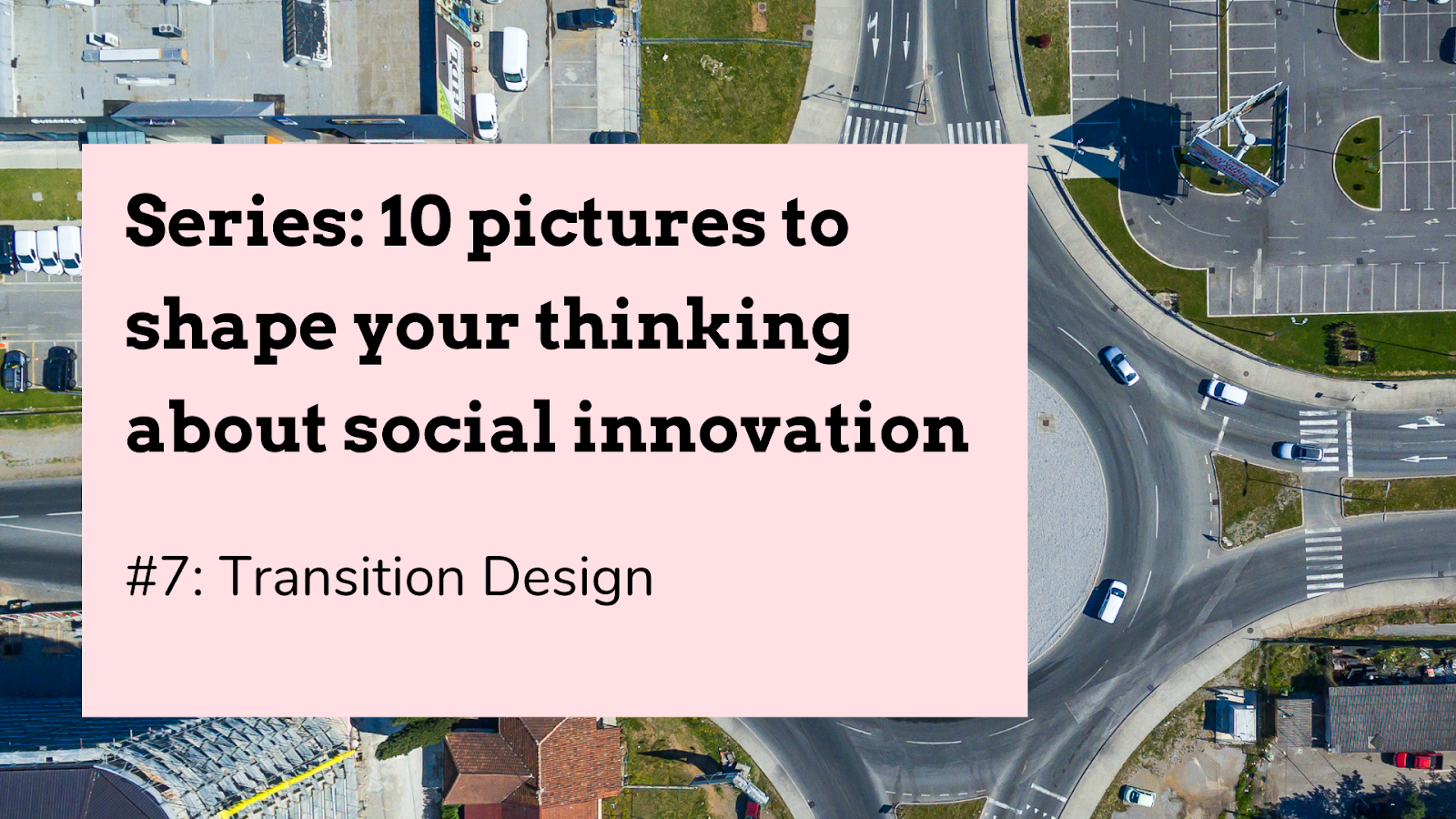
Transition Design
blog | Words Matt Berry | 25 Nov 2022
In this 10-part series, we share 10 different pictures that can help us to make sense of the big complex world of social innovation and systems change.In this 10-part series, we share 10 different pictures that can help us to make sense of the big complex world of social innovation and systems change
#7: Transition Design
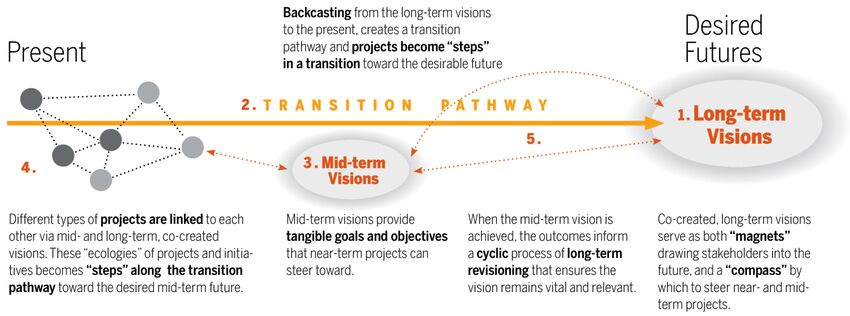
What does it say?
Transition Design is one of the most exciting emerging practices I’ve come across. Recognising the need to steer the huge transitions to come (hello climate crisis) towards more desirable outcomes, and noting that standard-issue design isn’t up to the task, it offers a new approach for long-term, collaborative innovation.
There’s much more to Transition Design than what’s captured in this picture, but the general process is as follows:
- Convene key stakeholders to co-create a bold vision for a long-term, positive future
- Thinking backwards from the vision, plot a transition pathway to get there
- Generate tangible goals that provide milestones along the transition pathway
- Pull together ‘ecologies of projects’ to work in alignment towards the shared visions you’ve crafted, deliberately creating the conditions for each other’s success
- Learn, reflect and adapt both projects and the visions they’re aimed at over time
It sounds simple enough spelled out as five easy steps, but there are some pretty radical shifts here. The moves from problem solving to future building, and from ‘heropreneurship’ to ecologies of coordinated efforts, will need us to reflect and change ourselves as designers – but they also offer a powerful new way to make change in the world around us.
How is it being used?
Terry Irwin, Gideon Kossoff and Cameron Tonkinwise developed the Transition Design concept at the School of Design Carnegie Mellon University, and it’s popping up in some really promising change efforts globally.
While they might not include every element of Transition Design, the mission-led innovation approach championed by economist Mariana Mazzucato and elaborated on by Sweden’s innovation agency Vinnova, and the innovation portfolio approach demonstrated by the UNDP Accelerator Labs and Europe’s Climate-KIC, are great examples of coordinating many efforts towards bold positive visions of the future.
Why is it important?
The shift from individual to collective efforts, and from finite projects to long-term commitments, feels both challenging and exciting to me.
If Donella Meadows offers us a range of leverage points for systems change (see blog 5 in this series), and the Power Shift Framework recommends that we work across multiple leverage points at different levels, Transition Design points out that we don’t have to do it all by ourselves: we can pull many levers across many levels by working in collaboration, each playing to our strengths and sharing our learnings across the collective.
Building ecologies of projects working in alignment over time just might be an approach that can match the scale of our greatest challenges. This way we don’t get to be the heroes – but we can be part of something important that’s bigger than us and longer than now.
Follow Matt Norman on LinkedIn for more insights and ideas about social innovation.
More in this series
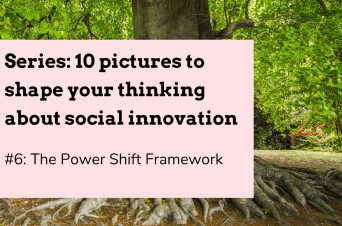
The Power Shift Framework
In this 10-part series, we share 10 different pictures that can help us to make sense of the big complex world of social innovation and systems change.
18 Nov 22
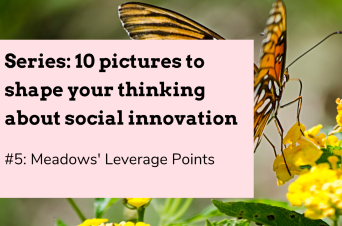
Meadows’ Leverage Points
In this 10-part series, we share 10 different pictures that can help us to make sense of the big complex world of social innovation and systems change
18 Nov 22
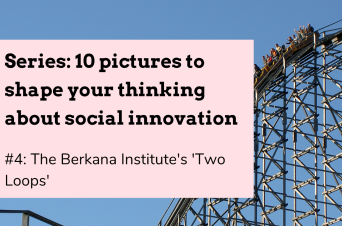
The Berkana Institute’s ‘Two Loops’
In this 10-part series, we share 10 different pictures that can help us to make sense of the big complex world of social innovation and systems change
11 Nov 22